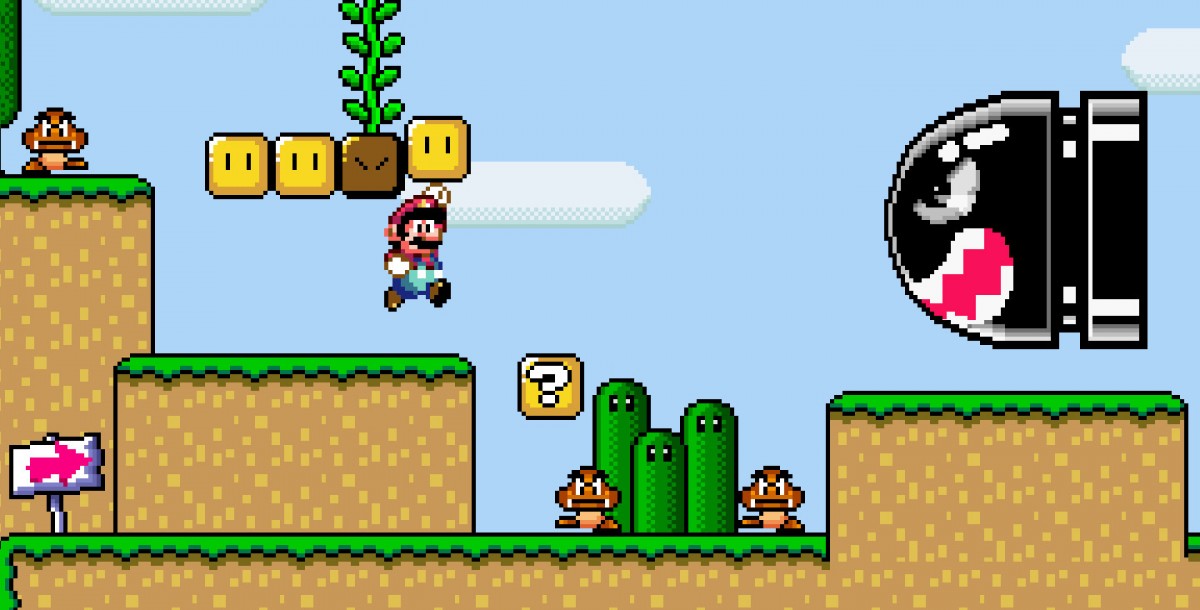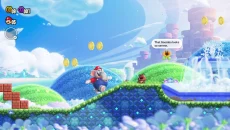“Super Mario World” featured various hidden vines, pipes and other secrets. (Photo courtesy of Nintendo)
The 21st Century has already seen many classic games be ported to contemporary consoles. With Nintendo’s E-Shop, they can ensure that the most valued titles in their catalog can be played by today’s gamers in their classic form. Since Nintendo goes through such lengths to make sure new fans can get to play these old games, what does it say about games that continue to be re-released? There are rare titles that seem to get a new reboot with every new console.
“Super Mario World,” a game released on the Super Nintendo System in America in 1991, was rebooted for “Super Mario All Stars” game in 1994, ported to the Game Boy Advanced with “Super Mario Advanced II”, made available for the Virtual Console on the Nintendo Wii, and is on the Nintendo E-Shop. That is how much Nintendo wants younger audiences to be exposed to this game.
As a reboot, it makes sense why Nintendo would keep releasing this game. Now that Mario has traveled to space in recent games, (as well as the Olympics and a paint covered resort) “Super Mario World” serves as a good history lesson for newer gamers. It has all the elements of a classic game. In those good ol’ 16-bit graphics, you can choose between Mario and Luigi for any level in this side scrolling adventure that involves jumping on Goombas and Koopas like original games. Here, you travel to Dinosaur Land instead of the Mushroom Kingdom, but Bowser still has Peach locked away in a castle and you still have to save her (no worries, she is actually there and not in another castle).
While staying true to repeated elements in the “Mario” games, “Super Mario World” also began many traditions that are revisited in subsequent titles. Perhaps the biggest tradition was that it was the first game where you could ride Yoshi, the green dinosaur that has been so beloved by fans. The Koopalings are also seen here (no Bowser, Jr. though). Among these elements, “Super Mario World” incorporated new levels called ghost houses, which have been seen at some point in most other games, whether it be the King Boo level in “Super Mario Sunshine” or the haunted house in “Super Mario 64.”
This game does stay true to Mario’s roots, while planting some roots of its own. There is a lot going for this game other than nostalgia, however. This game would not be cemented in Nintendo’s long standing history if it was not for its insane level design. Gamers might be familiar with the traditional Mario format, where Mario deals with the obstacles set before him to reach a flagpole or something of the like to beat the level. Instead of a flagpole, “Super Mario World” has a line of tape that moves up and down, and you have to break the tape to beat the level. This milestone is not always placed at the very right of the environment, though. Some levels have you going through multiple rooms, planting the exit to levels backwards from the direction you are going, even going so far as to have multiple exits.
In this game you also see a wide array of environments. There are several underwater levels, forest levels, levels high in the mountains, undergroud levels and one level on a bridge in the sky that might be one of the most difficult levels in “Mario” history. It is very hard to be bored at this game, since you are traveling around so many different places.
The enemies you encounter in “Super Mario World” are also noteworthy. There are your standard Goombas and Koopas. There are also football players of all things that take three jumps to be defeated. Bullets fly at you at some levels, underwater levels have large puffer fish that are hard to avoid and dry bones that respawn after you defeat them given some time. It will be tough dealing with these monsters, but you will remember them after you have defeated them.
Perhaps one of the best aspects in the game is the variety. As said before, Yoshi was introduced in this game. There are four different colored Yoshies. These Yoshies will gain different abilities depending on their color when they swallow a koopa shell. Also, there are four different block switches that need to be activated to progress through the game. Mario has great power ups, with the classic fire flower and the cape that lets you fly high above the environment. You can waste a lot of time just flying around on certain levels.
On top of all these things that make this experience magical, it has great replay value. You have a lot of freedom in this game as there are many secret passageways and hidden areas that allow different playthrough options. Some of these secrets let you sequence break a lot of the environment, making this game very good for speedrunning. The world record for a speedrun of “Super Mario World” without a glitch is 10 minutes and 46 seconds. The secrets also make a 100 percent playthrough take a long time. Many players will play the game sometimes for 100 percent, and others just to get to the final Bowser battle as quick as possible.
As with a lot of good “Mario” games, “Super Mario World” has a great soundtrack. The game has the fun little jingles that usually accompany a Mario title as well as eerie themes like the Castle Theme.
Even thought it was origionally released on the SNES, it does not feel like an old game. There are so many cherished moments in this game that it just feels like another trip to the Mushroom Kingdom. In a gaming scene that is dominated by intricate first person shooters and vivid action adventure games, this is one retro platformer you will not
be bored with.




